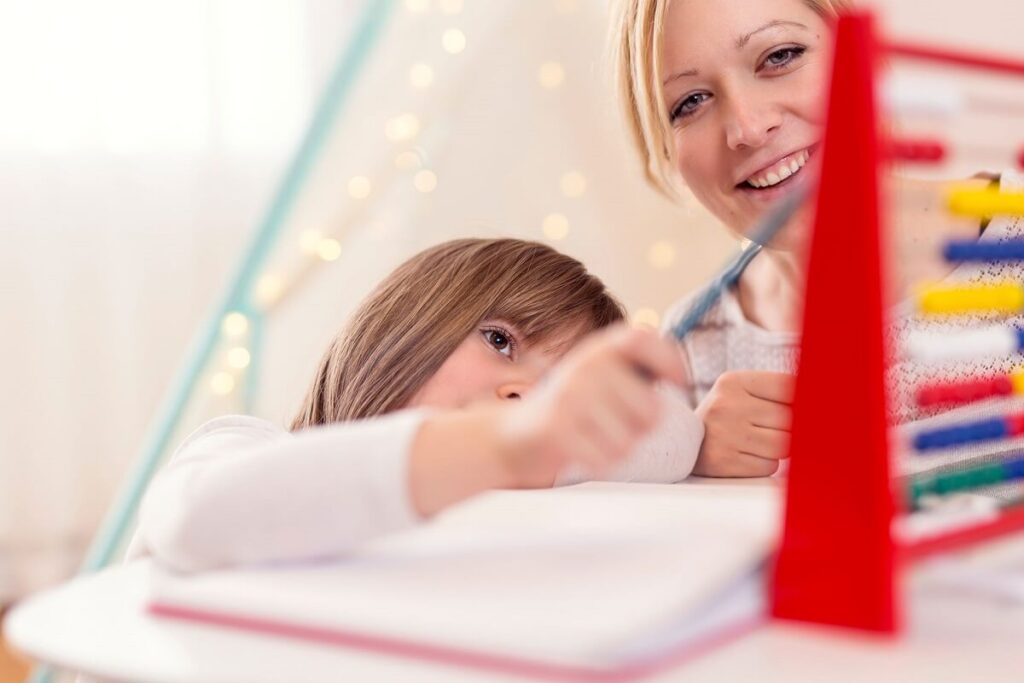
Montessori kindergarten classrooms focus on bringing up knowledgeable, empathetic citizens of the world. But unless you already know a bit about Montessori, you might wonder about the practicalities — like how young children learn math.
Through a hands-on learning process, kindergarteners master the math concepts they need for future success. Here are five of the most important ways they learn.
1. Developing Senses First
If you’re already familiar with the Montessori philosophy, you know that learning through the senses is a critical part of the process. Before kindergarten students start learning math, they develop their senses and start to discover mathematical concepts through play. This is the “sensorial” stage of learning.
2. Counting and Number Recognition
A strong Montessori education builds a child from the ground up — meaning a child doesn’t progress to the next level of learning until they’ve developed a solid foundation. So before kindergarteners jump into solving mathematical problems, they practice counting and number recognition. They might count on their fingers, count blocks, or just count out loud.
Before you can do math on paper, you need to understand written numbers, too. Kindergarteners can gradually become familiar with numbers by using number-matching cards. By making these learning sessions fun and engaging, Montessori instructors help to ensure students are building a solid foundation.
3. Learning With Concrete Tools
Once children have sharpened their senses, they move into the “concrete” stage of learning math. This is one of the most critical parts of the Montessori curriculum — Maria Montessori believed that children learned most effectively with hands-on activities.
Because the children can see and feel these learning tools, they internalize key mathematical concepts much more easily. Here are some of the tools Montessori kindergarteners use for mathematics:
- Sandpaper numbers (cards with sandpaper-textured written numbers)
- Color-coded, numbered tiles
- Colored bead bars (can be used to add and subtract numbers)
- Spindle boxes (numbered boxes containing the corresponding number of wooden dowels)
- Golden beads (small beads representing units of 10, 100, 1000, etc.)
Some of these tools — particularly the golden beads — are used in a range of learning activities. Once kindergarten students are comfortable solving math problems with visual and tactile representations, they can move on to understanding math in the abstract sense.
4. Applying Concepts in Everyday Life
As with every level of the Montessori program, Montessori kindergarten involves a wealth of different activities. Many of these activities familiarize children with basic life skills. In some cases, they even help kids learn and use math skills.
For example, if a kindergarten class has just been introduced to fractions, the children might find the concept foreign. But if a classroom activity involves baking and they need to measure out a half cup of water, it starts to make more sense!
5. Learning at Their Own Pace
So when exactly do students start learning to use abstract thought to solve math problems? That depends on when each child is ready. With a Montessori curriculum, each child can learn at their own pace. Quick learners won’t feel stymied, and students who take a little longer to master things won’t feel left behind.
Give Your Child the Gift of a Bright Future
Early childhood education is a critical time for development. When you choose Montessori, you’re giving your child the opportunity to reach their full potential. At Flagstaff Montessori, we’re proud to offer Sunnyside Campus, a learning center dedicated to the needs of children from 18 months to kindergarten age. If you think Montessori might be right for you and your child, please reach out to schedule your tour today!
